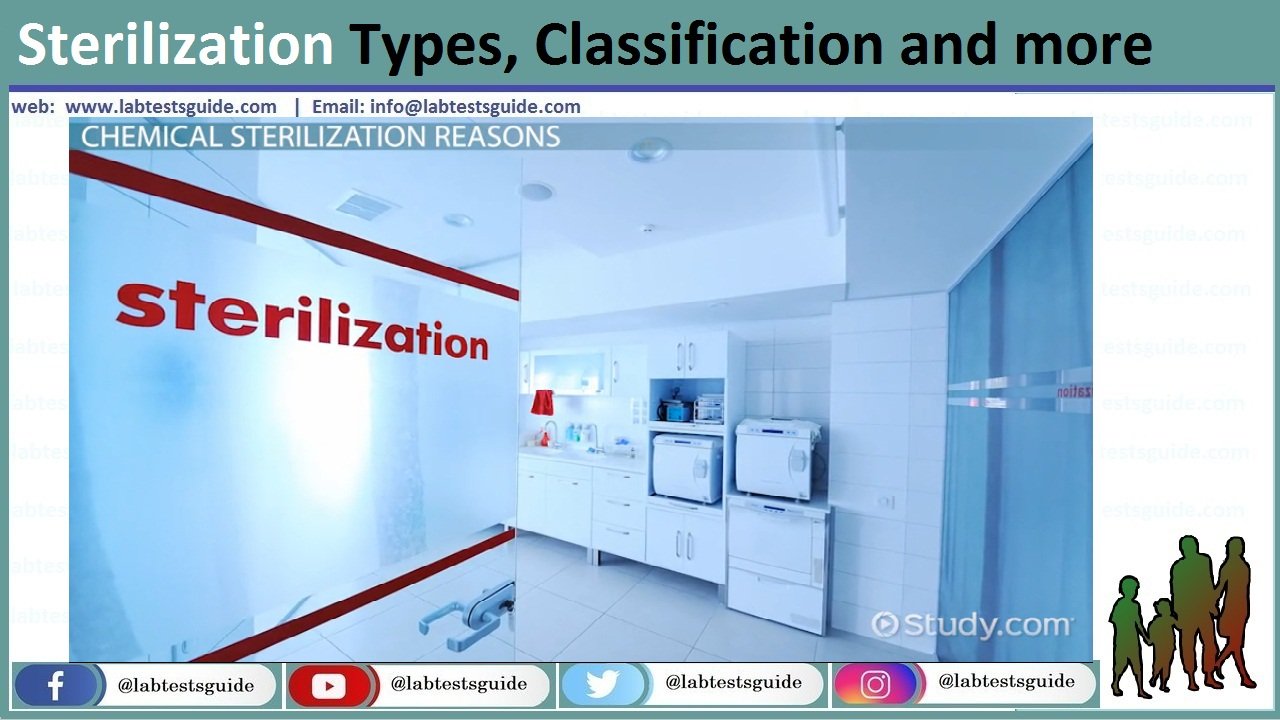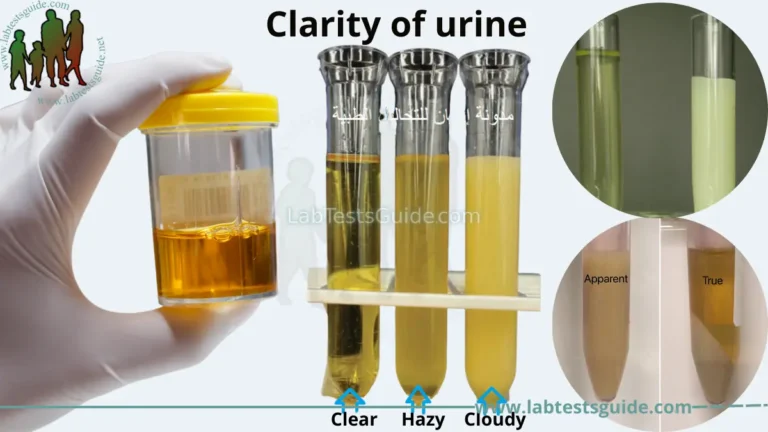Sterilization: Classification & Methods
Sterilization means the freeing of an article from all organism including viruses, bacteria and their spore, fungi and their spores both pathogenic and non-pathogenic. It is an absolute germ-free state sterilization is required for culture media, suspending fluids, reagents, containers and equipment used in the laboratory.

METHODS OF STERILIZATION
Following main methods are used in sterilization:
- Heat: heat is applied in its two forms dry heat and moist heat. It is very reliable and widely applicable method. Temperature above 100 ºC under controlled conditions kill spores as well.
- Ionizing Radiation: Beta and Gamma irradiation are used in the industry for disposable single use items like needles, syringes, latex catheters and surgical gloves.
- Filtration: choose to remove bacteria from fluids, which are spoiled by heating e.g blood, semen and antibiotics solutions.
- Chemical disinfectant: These can be:
- Ethylene oxide is used mainly in industry for sterilization of heat sensitive materials which cannot withstand heating such as plastics.
- Liquids: Certain liquid such as glutaraldehyde can be used when no other sterilization method is available. These are not very effective and reliable.
STERILIZATION BY DRY HEAT
Dry heat is suitable for glassware, instruments and paper-wrapped articles not spoiled by very high temperatures, and for water impermeable oils, waxes and powders. Dry heat cannot be used for water containing culture media.
Methods of application of dry heat include:
1- Red Heat: The articles to be sterilized are put in the flame directly until red-hot. It has its application in the sterilization of inoculating wires and loops, tips of needles and forceps, which should be held vertically in flame until red-hot along their whole length.
2- Flaming: This means direct exposure of articles to gas or spirit flame. This method whoever does not ensure complete sterilization.
3- Hot Air Over: This mode of heat is applied for substances which can withstand high temperature in the range of 160ºC to 180ºC and cannot be reliably penetrated by moist heat. It is used for glassware such as tubes, flask, measuring cylinders, all glass syringes and glass pipettes, powders, oils and greases in sealed container.
Hot air oven is used for sterilization of:
- Glassware
- forceps, scalpels, scissors etc
- Throat swabs
- Syringes
- Dry Materials in sealed containers
- Powders, fats, oil and greases, which are impermeable to moisture.
Following precautions should be observed when using hot air oven:
- The oven must not be overloaded space must be left for circulation of air through the articles.
- It must first be loaded and then heated upto sterilization temperature in the courses for 1 to 2 hours.
- Holding period of one hour at 160ºC is required for sterilization. it means one hour after attaining 160ºC.
4- Infrared Radiation: Infrared rays are generated by an electrical element and these rays are allowed to fall on the objects to be sterilized. The object is heated and sterilized.
STERILIZATION BY MOIST HEAT
Methods of application of moist heat include:
1- Pasteurization: This method is used for sterilization of milk. Temperature required is either 63ºC – 66ºC for 30 minutes or 72ºC for 20 second by this method eating utensils, clothes and bed sheets of patient can also be sterilized.
2- Boiling: Simple boiling is used for sterilization articles like syringes. Moist heat at 100 ºC continuously for 90 minute is used to sterilize culture. Intermittent exposure at 100 ºC for 20- 30 minute for three consecutive days is called Tyndallization. This is used for materials which are destroyed or denatured by prolonged heat such as media containing sugars. It allows killing of germinating spores.
3- Steaming below 100ºC: Steaming below 100 ºC is used for delicate material
4- Steaming above 100ºC: Moist heat at this temperature is achieved using heat under pressure. The equipment used for this purpose is called and autoclave. Household pressure cooker is a good example of a simple autoclave.
5- Steaming above 100ºC under pressure: This is most effective method of sterilization and requires an autoclave.
Related Articles:
Possible References Used





